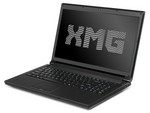Schenker XMG P501 PRO
Specifications

Price comparison
Average of 3 scores (from 5 reviews)
Reviews for the Schenker XMG P501 PRO
A heart for gamers. The game machine expert, Schenker, has expanded its successful P range by a new graphics card. The 15 inch XMG P501 PRO is now available with Nvidia's fervently awaited GeForce GTX 560M. Read in this review if the notebook can live up to the slogan "Xtreme Mobile Gaming".
Source: HardwareLuxx
 DE→EN Archive.org version
DE→EN Archive.org versionSingle Review, online available, Very Long, Date: 10/19/2011
Source: Notebookjournal
 DE→EN Archive.org version
DE→EN Archive.org versionSingle Review, online available, Medium, Date: 08/02/2011
Rating: performance: 90% features: 50% display: 70% mobility: 70% workmanship: 70% ergonomy: 30%
Source: Notebookjournal
 DE→EN Archive.org version
DE→EN Archive.org versionSingle Review, online available, Medium, Date: 07/01/2011
Rating: performance: 85% features: 50% display: 70% mobility: 70% workmanship: 70% ergonomy: 30%
Source: Notebookcheck
 DE→EN Archive.org version
DE→EN Archive.org versionSingle Review, online available, Long, Date: 06/26/2011
Rating: Total score: 85% performance: 95% display: 82% mobility: 73% workmanship: 84% ergonomy: 80% emissions: 76%
Source: SFT

Comparison, , Length Unknown, Date: 02/01/2010
Rating: Total score: 98%
Comment
NVIDIA GeForce GTX 560M:
The successor of the GeForce GTX 460M based on the new GF116 chip. The performance is about 13% better than the 460M but with similar power requirements due to hardware optimizations.
Modern games should be playable with these graphics cards at low settings and resolutions. Casual gamers may be happy with these cards.
» Further information can be found in our Comparison of Mobile Graphics Cards and the corresponding Benchmark List.
Intel Core i7: The Intel Core i7 for laptops is based on the LG1156 Core i5/i7 CPU for desktops. The base clock speed of the CPUs is relatively low, but because of a huge Turbo mode, the cores can dynamically overclock to up to 3.2 GHz (920XM). Therefore, the CPU can be as fast as high clocked dual-core CPUs (using single threaded applications) but still offer the advantage of 4 cores. Because of the large TDP of 45 W / 55 W, the CPU is only intended for large laptops.
2720QM: Fast Quad-core processor based on the Sandy Bridge architecture with an integrated graphics card and dual-channel DDR3 memory controller. » Further information can be found in our Comparison of Mobile Processsors.



